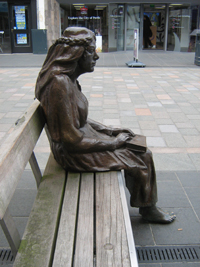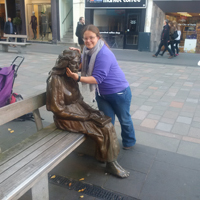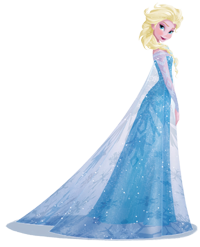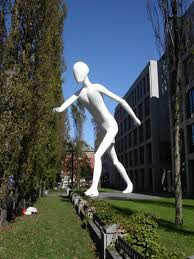Bad posture – lifestyle objects, fashion, Disney, and Santa
When did bad posture become so normal that it got ingrained into our culture?
This might seem like one of our more light-hearted posts. In it we shall look at how bad posture is not just propagated but almost idealised by advertising, fashion, Disney characters, and even Santa Claus. The underlying message, however, is serious. “Bad posture” has been incorporated into mainstream culture to the point where people no longer recognise it for what it is. It is viewed and accepted as “normal”. If or when it is recognised, it is usually discussed with a condescending tone, accusing the person of a “lack of” __________ (effort, exercise, attention). We are brainwashed by the advertising industry into purchasing lifestyle objects which are not good for posture and human body mechanics, despite the fact that they are advertised as such. We design children’s entertainment and toys which subconsciously propagate ideas about posture, and we build children’s furniture which breaks down their bodies already at a young age.
What is bad posture?
First of all, let’s define what we mean by “bad posture”. Posture is something we have, not something we do. Posture is simply dictated by how the bones in our bodies are stacked. If they are stacked correctly, our spines are aligned, and we have “good posture”. If they are stacked incorrectly, our spines become misaligned, change shape over time, and we develop “bad posture”. There is no laziness involved; nor is there muscular weakness, lack of exercise, or any other issues related to “not holding ourselves upright”. The real cause of bad posture lies in structural and mechanical changes to how the human body works. Through falls or accidents, spinal bones can get moved out of position forward, i.e. into a direction from which the body cannot correct the misalignment by itself. Lifestyle habits related to how we sit, stand, and sleep further complicate the issue. If the body can’t fix a problem, it has to compensate for it by shifting it to a different area. In the process, our spines, hips, knees, and feet twist up like a giant spring. This leads to more and more misalignments and the result is stuck joints, aching muscles, irritated nerve tissue, “wear and tear”, aches and pains, — and bad posture.
What does good/bad posture look like? What causes it?
Good posture means correct spinal alignment. It means that, if viewed from the side, a person’s ears sit above their shoulders. A straight vertical line down to the floor would pass through the ear, the front part of the shoulder, the hip joint, slightly behind the knee, and down through the ankle. The green picture above illustrates this.
Bad posture means anything other than this ideal. Most commonly, the head sits out in front of the body. This means loss to the correct spinal curve in the neck. The shoulders roll forward and the chest caves in. Breathing becomes harder as a result. Sometimes, a hump develops at the back where the neck meets the shoulders. The upper or mid-back changes shape too: it can become like a straight line instead of a normal smooth curve; or it can become a curve that’s too big (a hyperkyphosis or humpback as in the red picture above). The lower back changes shape too: it can become too straight, or develop too big a curve (a hollow back). The bum gets tucked under, the pelvis gets misaligned, the hips get twisted, and the knees end up bent. The more the body gets stuck forward, the harder it is to balance against gravity. The red image above gives an impression of bad posture. The straight vertical line that should follow the body is now a zigzag line.
Why is bad posture such a bad thing? We have discussed this elsewhere in much more detail here, here and here. Bodies become stuck forward because of bones having moved out of position forward. Bodies that are stuck forward cannot work at their best in terms of simple mechanics. Body weight gets distributed wrongly and pressure develops in areas where there shouldn’t be any. The human body is a precision machine. Once one part gets misaligned even slightly, the entire machine can’t run smoothly anymore. Wear and tear occurs, parts get stuck, other parts get unduly stretched and overworked, and the entire frame gets bent out of shape. Think of your car not running smoothly, and you get the idea.
Walk down the High Street and pay attention to the people around you. Give yourself 5 minutes. How many people can you spot whose head sits out in front of their body? How many of them are kids or teenagers? Bad posture is not an age-related issue. It’s an alignment-related issue. How many people do you see in those 5 minutes who are using sticks or walkers or wheelchairs? How many people are bent forward? None of this is normal. None of this is healthy.
While falls and accidents or heavy physical labour do, of course, play a significant role in creating bodies that are stuck forward like this, the real culprit often lies in prolonged or chronic lifestyle habits. The shoes we wear, the seats we use (from office chairs to car seats to settees), the pillows and mattresses we sleep on – all of these items of daily life are mostly designed with fashion aspects in mind, not with human body mechanics. As consumers, we don’t know this, so we buy what looks good or what feels “comfortable”. A lifetime of using a “foam” mattress, for example, can do just as much damage to spinal alignment as a bunch of falls or car accidents. Hours spent hunched over our computers, phones, or tablets contribute their fair share as well – and this starts in children and teenagers already.
The result: a culture of bodies which are stuck forward
In the 21st century, being stuck forward has become so widespread that it is pretty much considered “normal”. Bad posture is seen everywhere, and it usually isn’t considered a problem in itself. Almost everybody is running around with bad posture these days, so the vast majority of us don’t even notice it in ourselves or our children.
Only when things start hurting does posture enter the picture – usually in the form of accusatory or condescending reminders: “you’re not holding yourself upright. Sit/stand up straight! Don’t slouch!” This implies that it is our fault that we have bad posture – because we don’t spend enough effort on doing good posture.
There are now medical “diagnoses” of, for example, “text neck”, “office back”, “mouse wrist”, or “preacher’s knee”, to name but a few. The standard approach is to hand out painkillers which mask the problem, rather than looking for the real cause or for effective treatment options. Millions of pounds are lost to the economy each year due to absence from work caused by posture-related pain syndromes. Yet, somehow, posture is still considered no big deal.
Stuck-forward posture and lifestyle objects, fashion, Disney, and Santa Claus
In fact, we have become so culturally blind to bad posture that we propagate it without intending to. Instead of designing everyday items which support the body into an upright position, we build car seats, train seats, plane seats, and office chairs which “follow the shape of the body”. The problem is, however, that the body is stuck forward. Bucket seats, lumbar support rolls, and neck rolls at best keep the body in a stuck-forward position. At worst, they force it into an even more stuck-forward position. Anybody who’s been on a long distance flight, a long train journey, or even a long car journey knows this – you feel stiff and achy after arriving. The length of the journey isn’t the problem; the shape of the seat is. Similarly, we design mattresses which “mould themselves to the shape of the body” – in effect keeping it in a twisted-up, stuck-forward position.
And thus we as a society become more and more stuck forward; we even design children’s furniture and shoes which cause our kids’ bodies to get stuck forward from a young age.
Because bad posture is so prevalent, being stuck-forward has somehow become a fashion ideal. You surely have seen models on the catwalk, moving their bodies unnaturally, their gait exaggerated or distorted, their necks sticking out, their butts tucked under to the point where they lead with their (non-existent in terms of body fat) bellies. Somehow this is meant to be beautiful, even ideal. Newsflash: it isn’t how the human body is supposed to walk.
The same distorted image exists in mannequins used in advertising. Check out the pictures of common window displays. Next time you’re in a High Street fashion shop, look around. Whether it’s Next or Debenham’s or Marks & Spencer’s, check out not just the fashion but look at the mannequins. You’ll be shocked to see their “posture”. And it’s not just the females. Male mannequins are just as stuck forward. While you’re at it, make sure to check the children’s section and look at the children’s mannequins too. You’ll be truly horrified.
Yet, subconsciously, stuck-forward models and mannequins propagate a fashion ideal. This is what a beautiful body is supposed to look like. Check out the tilted heads, stuck-forward necks, shoulders rolling forward, bellies sticking out, pelvises and hips tilted, knees bent.
If that’s not bad enough yet, check out the Disney characters below. Most of the princesses, and a fair share of the princes have shoulders that roll forward, necks that stick out in front of their bodies, chests that are caved in, bellies that stick out (because of problems in their low backs), bums that are tucked under, lumbar curves that are way too big (hollow backs), and hips that are twisted… if they were real, they would be drugged up on painkillers for posture-related pain syndromes from back pain to headaches. It’s not just in the movies, however. Merchandise such as dolls and action figures copy the same distorted frames and stuck-forward posture.
Our kids watch the Disney movies and play with the dolls and learn that this is what “beautiful” looks like. We, as their parents, are so used to seeing stuck-forward bodies everywhere that we don’t notice if our children develop hollow backs, if their tummies stick out due to low-back problems, if they tuck their bums under, or if their feet and knees get twisted. We are so surrounded by stuck-forward posture that we don’t know anymore what normal looks like. Because we don’t know what normal looks like, we cannot recognise abnormal.
By the way, if somebody needs to stand with their hands crossed behind their back to balance themselves, it means their body is really really twisted up and stuck forward! The same goes for when their hands are crossed in front of their bodies. So if you are standing like this, your body is massively stuck forward!
Even Santa Claus has stuck-forward posture and low back problems – that’s why his lower belly is sticking out so much (below the belt) and his bum is tucked under. No wonder, his sledge is probably equipped with some sort of ultra comfortable foam padding and big cushions to make the long journey from the North Pole more “comfortable”. Yet, as you can see, it is taking a toll on his body…
Public art pieces also often display “bad posture”. A quick google search found a stunning amount of stuck-forward art. Examples include the Walking Man sculpture in Munich – check out the guy’s twisted ankle, stuck-forward upper body, and stuck-forward neck.
Or, closer to home, the Fair Maid statue on Perth’s High Street. Each time our practitioners walk past her, they get twitchy fingers because of her massively stuck-forward neck. 

The Statue of Liberty doesn’t exactly have good posture either (her neck is sticking out, as is her belly due to low back issues).
Nor does Cristo Redentor in Rio (his chest is a bit caved in).
A colourful group of children in Chicago.
The nude Japanese lady not only has her neck sticking out and her shoulders rolling forward, but there’s a classic L5-belly (lower part of the belly sticking out due to problems in the lumbar spine) too.
All of these are perfectly “normal”, right?
As long as stuck-forward posture is considered “no big deal”, “normal”, or even “beautiful”, most people will not recognise it as dangerous. More and more medical research is confirming the detrimental health effects caused by bad posture. We still have a long way to go before we, as a culture, recognise bad posture for what it is: abnormal, painful, causing vast economic costs, endangering people’s health, and silently shortening lives
Now that you know what to watch out for, come in for a free consultation if you have any concerns about your or your children’s posture. We are also here to advise about best seating options, best mattresses / pillows, and best footwear for everyday life or workouts. Get in touch and have a chat with one of our practitioners.















